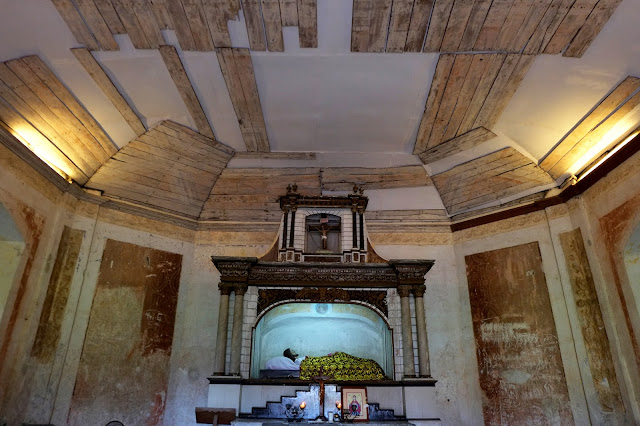IN PHOTOS: A Burial Place Like No Other in Nagcarlan
THE PHILIPPINES is a country of historical treasures—century old churches, ancestral houses, olden town centers and cultural establishments, among many others.
In Nagarcalan, Laguna, a prized historical landmark lies under
the ground, silently and solemnly for it is a resting place for the dead.
Ordered built in 1845 by Franciscan Fr. Vicente Velloc, the Nagcarlan Undergound Cemetery is an
octagonal enclave of stone and brick walls with wrought iron windows. A total of 276 are buried, of which 36 are located in an underground crypt.
Traveling Journo Ph saw
firsthand this unique structure that has once been the chosen burial place of
Nagcarlan’s privileged people. Today, it serves as a tourist destination for
visitors of the hilly town south of Metro Manila.
Look at the photos of and know more about the underground
cemetery below:
 |
| The materials used in the making of the burial place range from different kinds of rocks to wood to tiles. |
 |
| The chapel's curvilinear ceiling is planked by polychrome wood while its walls are embellished with frescoes and its floor is combined with red and patterned tiles. |
 |
| The chapel served as the last station of the funeral rites before the dead is entombed. It was in 1981 when a Nagcarlan resident was buried here. |
 |
| Above ground, there are niches, 120 on both sides, where more famous families from the town has been buried during the 19th century. |
 |
| Indeed, the Nagcarlan Underground Cemetery is a remarkable landmark born out of faith, enriched by history, and now appreciated for its curiosity and beauty combined. |
(TEXT AND PHOTOS ©EUDENVALDEZ)
SOURCE: www.nhcp.gov.ph








 Euden Valdez
Euden Valdez




No comments: